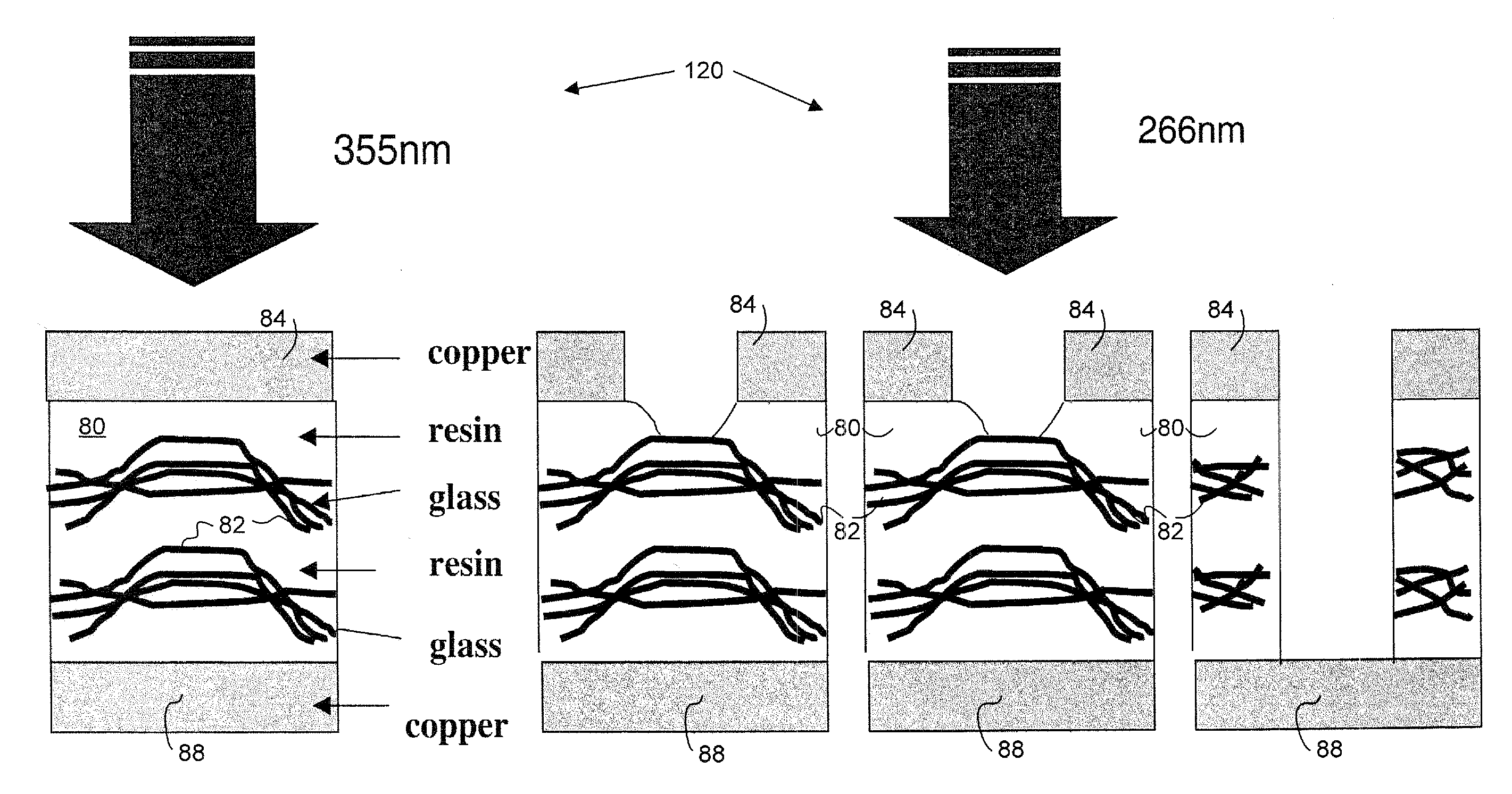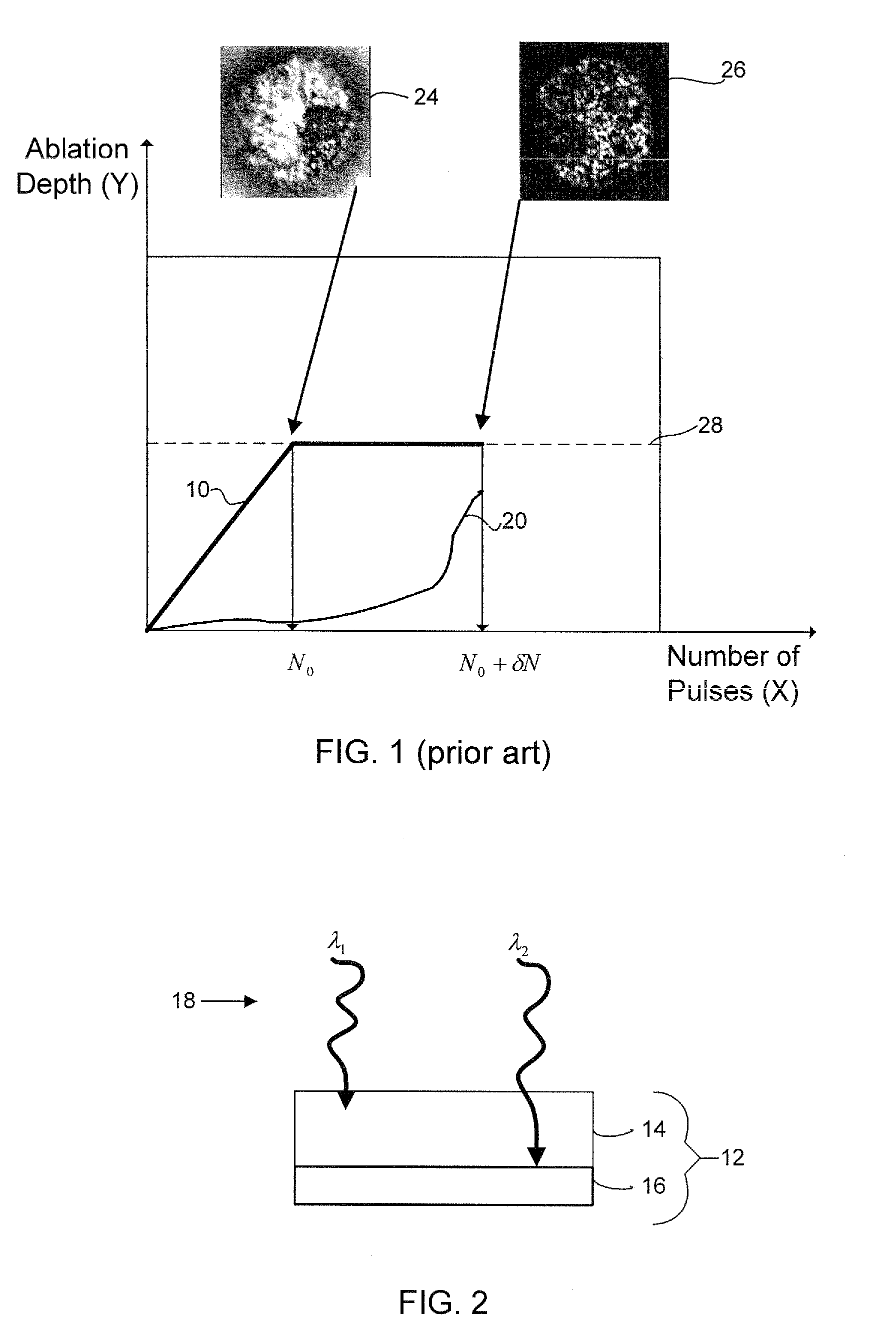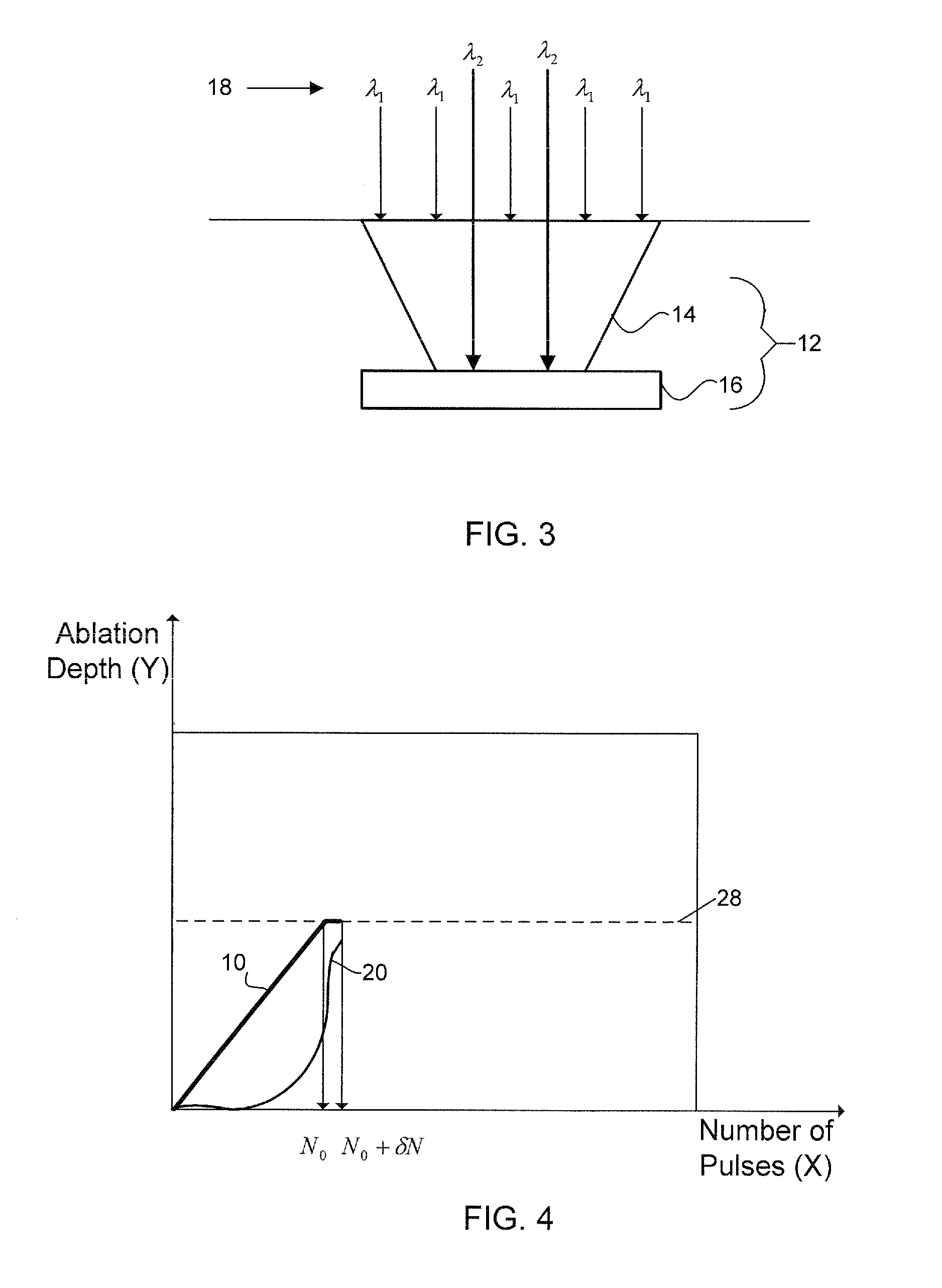Multiple laser wavelength and pulse width process drilling
- Summary
- Abstract
- Description
- Claims
- Application Information
AI Technical Summary
Benefits of technology
Problems solved by technology
Method used
Image
Examples
Embodiment Construction
[0039]FIG. 1 shows a typical ablation depth response 10 to imaged beam drilling of a multilayer target material 12 shown in FIG. 2, in which target material 12 includes a dielectric or resin material 14 that is removed by a number of laser pulses N0, and a layer of metal 16 underlying dielectric or resin material 14 that is cleaned by punching with a further number of pulses δN as metal layer 16 is heated. FIG. 2 also shows components of a hybrid laser beam 18 comprising two different wavelengths (λ1, λ2) that may be collimated into a single laser beam to process multilayer target material 12.
[0040]The X-axis of FIG. 1 corresponds to the number of pulses, and the Y-axis corresponds to ablation depth. A plot line 20 tracks the temperature of a surface of metal layer 16 to indicate that the rate of cleaning of the surface of metal layer 16 increases as its temperature increases. A via image 24 shows a blind via after bulk resin material 14 is removed, and a via image 26 shows the blin...
PUM
| Property | Measurement | Unit |
|---|---|---|
| Wavelength | aaaaa | aaaaa |
| Wavelength | aaaaa | aaaaa |
| Time | aaaaa | aaaaa |
Abstract
Description
Claims
Application Information
 Login to View More
Login to View More - R&D
- Intellectual Property
- Life Sciences
- Materials
- Tech Scout
- Unparalleled Data Quality
- Higher Quality Content
- 60% Fewer Hallucinations
Browse by: Latest US Patents, China's latest patents, Technical Efficacy Thesaurus, Application Domain, Technology Topic, Popular Technical Reports.
© 2025 PatSnap. All rights reserved.Legal|Privacy policy|Modern Slavery Act Transparency Statement|Sitemap|About US| Contact US: help@patsnap.com



